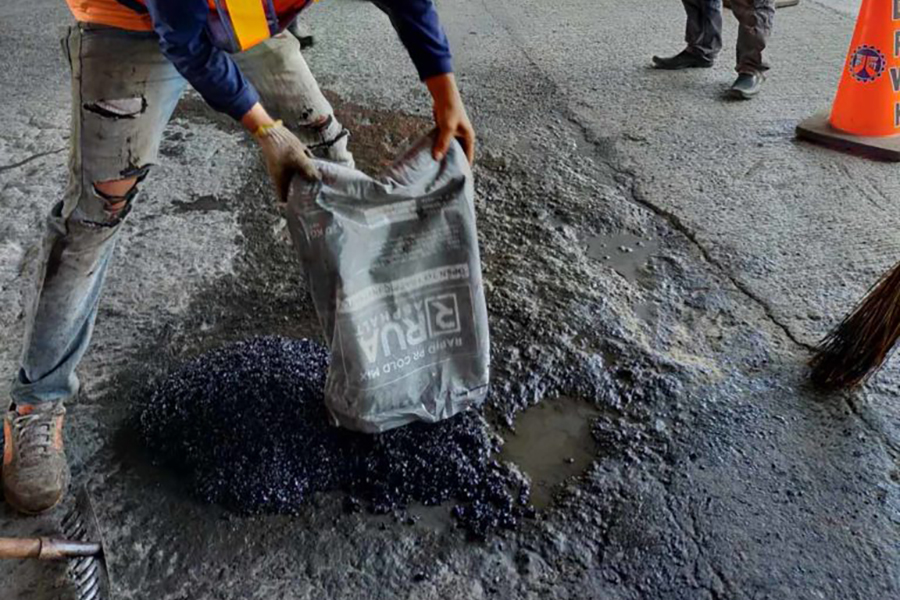Experience the Difference: Hot Mix Asphalt Paving for Regrading Projects
Experience the Difference: Hot Mix Asphalt Paving for Regrading Projects
Blog Article
Unlocking the Secrets of Hot Mix Asphalt Technology
Discovering the midsts of hot mix asphalt technology reveals a world where thorough processes and specific solutions assemble to form our roads and framework. The combination of fillers, aggregates, and binders isn't just a building job but a critical orchestration of sturdiness and efficiency.
Value of Hot Mix Asphalt
Hot Mix Asphalt plays a critical function in modern-day infrastructure advancement due to its toughness and cost-effectiveness. As one of the most typically made use of paving material for roads, freeways, and parking great deals, Warm Mix Asphalt provides an array of benefits that contribute to its value in construction jobs. One vital advantage is its ability to withstand rush hour lots and harsh climate condition, giving a reliable and lasting surface area for transportation networks. Furthermore, Hot Mix Asphalt is cost-efficient in both first construction and long-term maintenance, making it a recommended choice for lots of framework tasks.
The toughness of Hot Mix Asphalt stems from its make-up, which consists of aggregates, binder, and filler products that are very carefully selected and blended to meet details performance needs. Generally, the importance of Warm Mix Asphalt in facilities development can not be understated, as it proceeds to be a cornerstone of contemporary construction methods.
Components of Asphalt Mixes
The structure of asphalt mixes consists of carefully picked accumulations, binder, and filler materials that are vital for accomplishing details efficiency requirements. Accumulations are the primary element of asphalt blends, providing stamina and security. These aggregates can be natural, such as crushed rock or smashed rock, or artificial, like recycled materials from old pavements. The binder, typically bitumen or asphalt concrete, holds the accumulations together and offers versatility and durability to the mix. The option of the binder is essential as it straight affects the mix's efficiency in various weather. Fillers, such as moisturized lime or Rose city concrete, are used to enhance the mix's workability and aging resistance. Angled Parking.
The combination and proportion of these components play a considerable function in identifying the high quality and performance of the asphalt mix. Designers meticulously make the mix to fulfill details needs, taking into consideration factors like traffic quantity, climate problems, and sidewalk lifespan. Proper selection and harmonizing of accumulations, binder, and fillers are crucial for developing long lasting, durable asphalt pavements.
Combining and Manufacturing Methods

Once the aggregates are selected, the binder, often asphalt cement, is contributed to bind the products with each other. The binder's top quality and amount dramatically influence the mix's toughness, resistance, and versatility to environmental elements. Additionally, fillers like moisturized lime or Portland concrete may be included to enhance certain qualities of the asphalt mix, such as its workability or moisture resistance.
Throughout production, the accumulations and binder are warmed, commonly in between 250-325 ° F(121-163 ° C ), to promote mixing and make sure proper finishing of the accumulations. The mixing procedure should be comprehensive to accomplish a homogeneous mix that promotes the desired performance features of the asphalt. Different techniques, such as set mixing or drum blending, are employed to attain constant and top quality asphalt mixes for building and construction jobs.
Factors Influencing Asphalt Efficiency
Elements affecting asphalt performance incorporate a range of variables that influence the sturdiness, longevity, and general top quality of asphalt pavements. One vital element is the top quality of materials made use of in the asphalt mix. The type and source of accumulations, the binder quality, and the ingredients all play a significant function in establishing the performance of the asphalt pavement. The rank of aggregates is essential as it influences the mix's security, workability, and resistance to fracturing and rutting.

Environmental problems additionally influence asphalt efficiency. Temperature variations, dampness infiltration, and web traffic loads can all affect the architectural stability of the pavement. Layout considerations, such as pavement density and drainage, are necessary in ensuring the long-lasting efficiency of the asphalt pavement. By thoroughly taking into consideration these aspects, engineers and specialists can optimize asphalt performance and improve the life span of sidewalks.
Sustainable Practices in Asphalt Innovation

WMA allows for the manufacturing and positioning of asphalt mixes at reduced temperature levels compared to standard hot-mix asphalt, resulting in minimized power consumption and greenhouse gas emissions. The usage of permeable asphalt mixes can assist minimize stormwater runoff problems by permitting water to penetrate through the pavement and right into the ground, advertising natural water purification and charge procedures.
Conclusion
Finally, hot mix asphalt technology plays an important function in contemporary framework growth as a result of its resilience and cost-effectiveness. By very carefully stabilizing elements, utilizing appropriate mixing methods, and thinking about different elements, engineers can create top quality asphalt mixes imp source that withstand heavy traffic lots and severe weather condition conditions. Embracing lasting techniques, such as utilizing warm-mix technologies and recycled products, better boosts the environmental friendliness of asphalt technology.
Mixing and production strategies in warm mix asphalt technology involve the specific combination and processing of accumulations, binder, and fillers to produce a high-performance and durable asphalt mix.Aspects influencing asphalt performance include a range of variables that impact the sturdiness, longevity, and total high quality of asphalt sidewalks. Sustainable practices in asphalt modern technology encompass numerous efforts intended at minimizing the environmental effect of asphalt production and paving procedures. By including recovered asphalt sidewalk (RAP) and recycled asphalt roof shingles (RAS) right into new asphalt blends, the industry can dramatically decrease the intake of raw materials and power, while also read what he said reducing landfill waste.
WMA enables for the manufacturing and placement of asphalt blends at reduced temperature levels compared to typical hot-mix asphalt, resulting in minimized power consumption and greenhouse gas exhausts.
Report this page